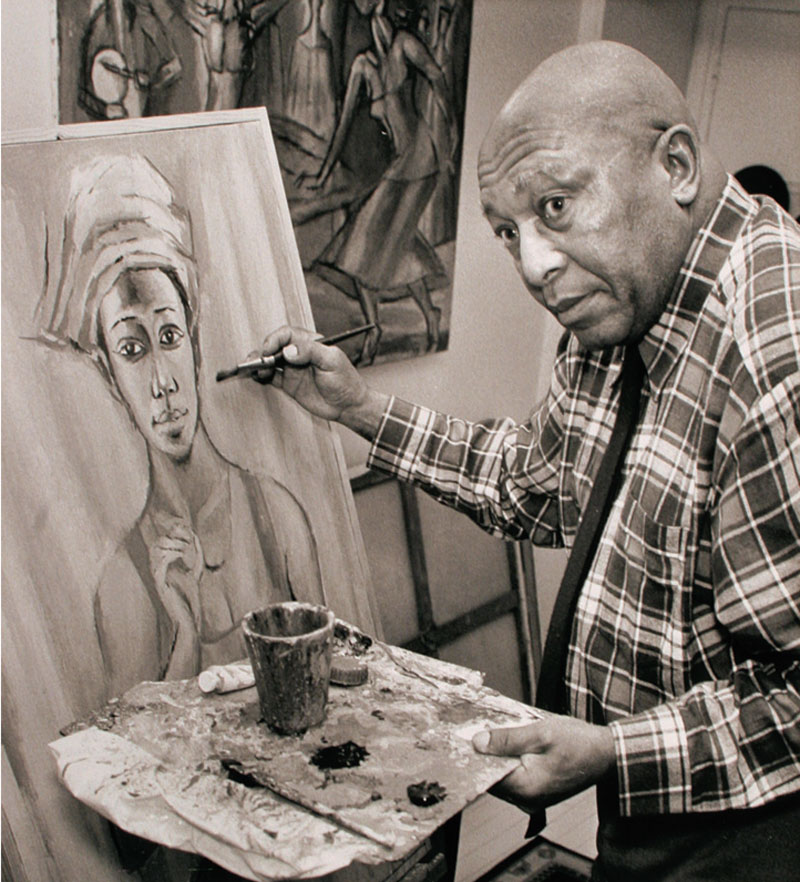Gerard Sekoto: A Life Painted in Exile and Colour
A visionary artist who captured the spirit of black South African life through modernist eyes.

Early Life and Background
Gerard Sekoto wasn’t just an artist; he was a witness, a chronicler of black South African life at a time when so few others dared to tell that story. Born on December 9, 1913, in the quiet mission station of Botshabelo, his early world was steeped in both Christian hymns and the traditions of African life. These twin influences, Western classicism and native culture, echoed in his work for decades to come.
Artistic Evolution and Themes
Sekoto’s early years as an artist were shaped by his experiences in urban South Africa.
He came of age during a time of seismic change. Moving to Johannesburg in the late 1930s, he found himself in the middle of a restless, pulsing urban energy. It was here that Sekoto’s art began to bloom. He painted life in the townships, Sophiatown especially, with an intimacy and compassion that made even the mundane moments feel momentous. His brush captured street scenes, family gatherings, musicians, and the quiet ache of poverty—all rendered in rich, human tones. His early style was alive with warmth, light, and colour, yet shadowed by the heavy air of inequality.
But in 1947, facing the tightening grip of apartheid, Sekoto left South Africa for Paris. He would never return. Exile became his state of being, emotionally and physically, and this experience seeped into his canvases. In France, his work shifted; less documentary, more interpretive. Modernist influences such as Cubism and Expressionism crept in, but the soul of his homeland never left his palette. Even when painting from afar, his imagination roamed Sophiatown’s streets, now tinged with memory, loss, and quiet defiance.
Notable Works

Some of Sekoto's most striking works speak directly to this journey. "Yellow Houses, Sophiatown" (1940) is bright and warm, steeped in nostalgia. "Song of the Pick" (1946 above) hums with the rhythm of labour and resistance. Later pieces like "The Prisoner" (1961) and "Homage to Steve Biko" (1978) are more political, more urgent, yet still steeped in humanity. His 1955 painting "Interior – Woman Seated" hints at introspection, shaped by the Parisian quiet and his own evolving inner world.
Music and Multidisciplinary Talents
And Sekoto’s talents weren’t confined to painting. In Paris, he supported himself as a musician; playing piano in cafés and bars, composing songs, infusing his life with melody when words or paint weren’t enough. That same sense of rhythm and flow found its way into his brushwork. His canvases often feel musical, like jazz rendered in oil and light.
Legacy and Recognition
Today, Gerard Sekoto stands as a giant in South African art, a pioneer of black modernism whose voice refused to be silenced, even in exile. His works are held in some of the world’s most respected institutions; from the Johannesburg Art Gallery to Tate Modern, to UNESCO’s own collection. His legacy is preserved not only by scholars and curators, but by the Gerard Sekoto Foundation, which continues to shine a light on his contributions.
Visual Style and Influence
His tools were varied; oil, gouache, pastel, ink but, his subject was always the same: the human experience. Whether painting the heat of a Sophiatown afternoon or the cold introspection of exile, Sekoto brought to the canvas a rare honesty. His style was a fusion; part African tradition, part European modernism, part melody. But it was always, unmistakably, Sekoto.
Gerard Sekoto’s legacy lives on, not just in museums and textbooks, but in the continued inspiration he offers to artists navigating identity, displacement, and creative resilience.
Further Resources
If you’d like to explore more, consider reading Barbara Lindop’s book: "S" and Chabani Mangany's book: "also offers an insightful portrait. Online, the Iziko Museums Collection and the Gerard Sekoto Foundation websites provide excellent archives and resources (As an Amazon associate, I earn from qualifying purchases).

Leave a Comment
I hope you enjoyed this post. If you would like to, please leave a comment below.